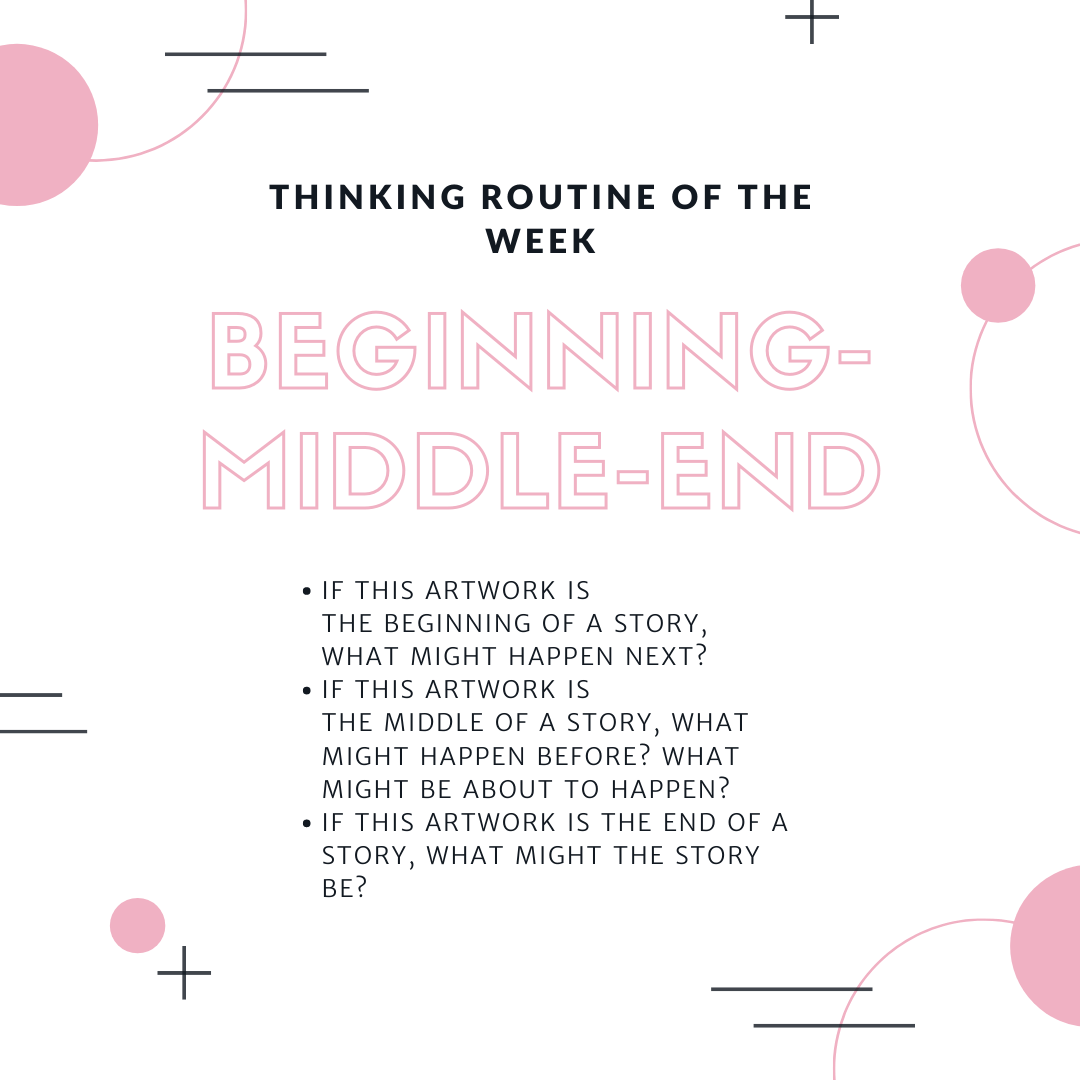⭐️VISIBLE THINKING ROUTINE OF THE WEEK ⭐️
BEGINNING-MIDDLE-END
I absolutely love this routine. It has always been a STAR ⭐️ for me with groups of all ages. It never fails. Even with a group of IT Managers who admitted right at the start of our workshop that they ‘don’t do art museums’ loved this routine and came up with some very imaginative storylines for some Jeff Wall photographs!
BEGINNING-MIDDLE-END is our 5th VTR of the week and this one is the last thinking routine that we cover on our DAY 1 Introduction to VT in the Museum training (others are, in case you have forgotten: SEE-THINK-WONDER, LOOKING TEN TIMES TWO, STEP INSIDE, HEADLINES).
This Visible Thinking Routine encourages storytelling and the imaginative exploration of ideas. It also helps participants look for connections, patterns, meanings. I love using this routine with paintings and photographs. You can focus on one of the questions or divide the group up into three and give each group a question:
If this artwork is the beginning of a story, what might happen next?
If this artwork is the middle of a story, what might happen before? What might be about to happen?
If this artwork is the end of a story, what might the story be?
I like to divide the group up into 3 mini-groups and assign each group either the ‘beginning’, ‘middle’ or ‘end’ question to think about. Encourage groups to work away from each other so that they don’t overhear what the other group is saying. You want to encourage each group to come up with their own ideas for what might happen next (or before, depending on what question you got!). You can then ask the group to tell their story – one or two volunteers can be the narrator perhaps whilst other group members could act out the scene.
If you’re short on time, start with a quick observation of the artwork and then focus on just one of the questions e.g beginning: what might happen next? Ask the group to discuss with their neighbour for 1-2 timed minutes (the limited time encourage the participants to think fast and to run with their first thoughts rather than rejecting them outright).
In both of the above examples, you are aiming for participants to observe and then assess what is currently going on in the scene in question, before they then brainstorm ideas for what might happen
It works well when combined with an observation routine and generally has best results when used in the middle or towards the end of a programme or tour. I wouldn’t use it at the start of a programme as participants need to be warmed up and at ease to get the creative juices are flowing!
Have you used ‘BEGINNING-MIDDLE-END’ before? 🤔Let me know in the comments below! 👇
